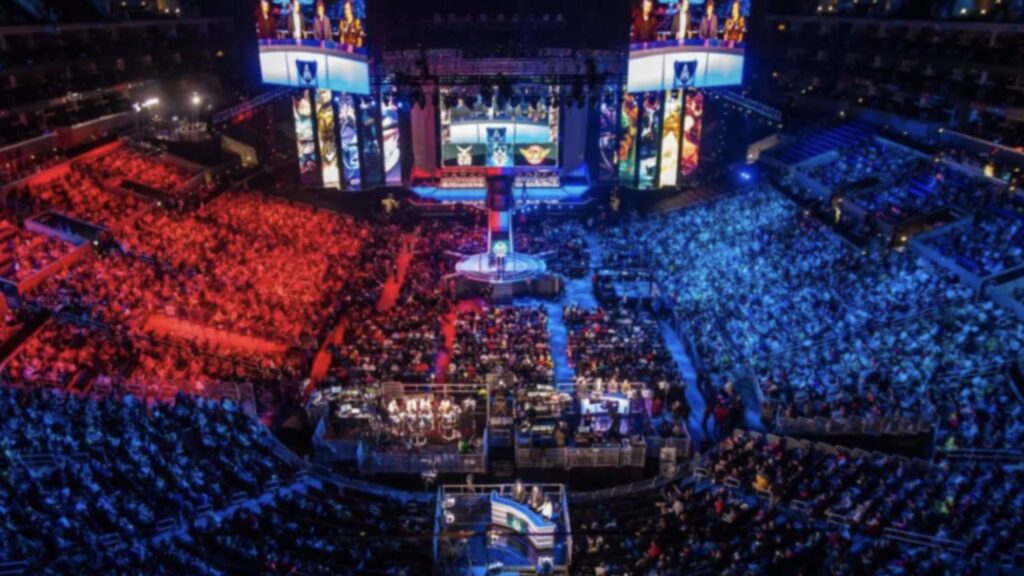By NFTooPerfect
Introduction
For several years investors, founders, and builders have identified gaming as a critical sector in onboarding new users into the blockchain ecosystem.
We have been consistently building with that end in mind. Gamified mechanics have been introduced for breeding, burning, staking, token-gated access, using innovative tokenomics models. But what have we learned, and where are we going with this innovation?
This article takes you on the journey to date and examines the direction the integration of NFTs and esports could take going forward.
Article Outline
- Background
- Funding and Future Developments
- Gamer Sentiment — A Fresh Look
- Existing Crypto Gaming Analytics
- A Brief History of Esports
- The Case For Esports x Blockchain Integrations
- Closing Remarks
Background
As blockchain gaming continues to find its feet, we’ve seen virtual land sales, presale passes for alpha gameplay, soulbound tokens, play-to-earn, free-to-own, idle Role Playing Games (“RPGs”), battlers, dungeon crawlers, and even characters embedded as lines of code for a to-be-released game.
If you’d like a more thorough walkthrough of play-to-earn (“P2E”), tokenomics, and how we got to where we are today, check out our previous article on Tokenomics here (TLDR: 2022 wasn’t a great year for P2E, but we’ve been experimenting with some interesting models as a result).
The Nansen index illustrates a -76% reduction (in terms of ETH) or a -92% fall (in terms of $USD value) since January ’22 for NFTs related to P2E. A dramatic fall from grace, but is this still just the beginning of a flourishing ecosystem, and is there huge potential in this NFT segment?

Despite the bumpy progress for P2E this year, blockchain gaming has still brought in $3.4B year-to-date in private funding. This demonstrates that there remains long-term conviction, and trust in a successful future for the sector.
Funding and Future Developments
There continues to be plenty of financing activity for those seeking to make a change to the existing landscape and disrupt how the wider gaming ecosystem operates.
One big highlight from the year is Limit Break which announced a $200M funding raise to drive forward web3 MMO and free-to-own gaming initiatives.

Of course, building and executing appropriately with these funds is imperative. We’ve seen several high-profile NFT projects fall from grace from mismanagement of funds or ineffective execution on their roadmaps.
In a recent interview at GDC 2022 Aleksander Larsen (Cofounder & COO, SkyMavis/Axie Infinity) says that as we build the future of blockchain games we must:
“make sure that fundamentally the game that you’re designing is fun. That it can benefit from having an open or player-owned economy. And that the IP that you’re trying to create has the potential to grow outside of just being that one thing… NFTs are primitives that can be used as building blocks. The experiences are unlimited if you do it right.”
Prioritizing a fun and engaging social experience has been the name of the game for Fortnite creator Epic Games, who raked in $2.4 billion… in 2018… off of cosmetic skins alone (reminder: Fortnite is free to play). If you create experiences where people want to hang around longer, they likely will want to express themselves while doing so. Without fun as the focus then is it really a game? It’s unlikely the ecosystem will onboard many without this at its ethos.
We’re certainly tinkering with the building blocks of the future. But in the coming months & years, we will likely see some riveting developments in the blockchain gaming space that continue to push the industry (and its players) forward.
Gamer Sentiment — A Fresh Look
Now that we have looked at some of our approaches to blockchain gaming and some of the financials involved, let’s examine gamer sentiment.
In a report published by Coda Labs, we see several barriers to entry for new gamers not yet engaged in the crypto ecosystem. Lack of familiarity with how this whole process would even work, or adopting the technophobic approach to wallet setup akin to your grandmother navigating the on button for the personal computer.

Despite these headwinds, it’s good that we have an awareness of the current pitfalls so that they can be remedied.
For instance, adopting similar approaches to Starbucks and Reddit to facilitate a masterclass in onboarding fresh faces. Educate your participants, eliminate the blockchain jargon, & make the user experience seamless + intentional on the front end. Change the term “NFT” to something more layman-friendly like “digital collectible”.
Existing Crypto Gaming Analytics
Diving deeper, we see interesting data around crypto gamers — namely the fact that they tend to occupy (on average) the more “hardcore gamer” category.
They are twice as likely to create or personalize a character/avatar than a non-crypto gamer, and almost twice as likely to have played in tournaments or engage with collectibles. These overlaps correlate closely with the ‘hardcore’ gamer and esports fan categories.

Despite these headwinds, it’s good that we have an awareness of the current pitfalls so that they can be remedied.
For instance, adopting similar approaches to Starbucks and Reddit to facilitate a masterclass in onboarding fresh faces. Educate your participants, eliminate the blockchain jargon, & make the user experience seamless + intentional on the front end. Change the term “NFT” to something more layman-friendly like “digital collectible”.
Existing Crypto Gaming Analytics
Diving deeper, we see interesting data around crypto gamers — namely the fact that they tend to occupy (on average) the more “hardcore gamer” category.
They are twice as likely to create or personalize a character/avatar than a non-crypto gamer, and almost twice as likely to have played in tournaments or engage with collectibles. These overlaps correlate closely with the ‘hardcore’ gamer and esports fan categories.
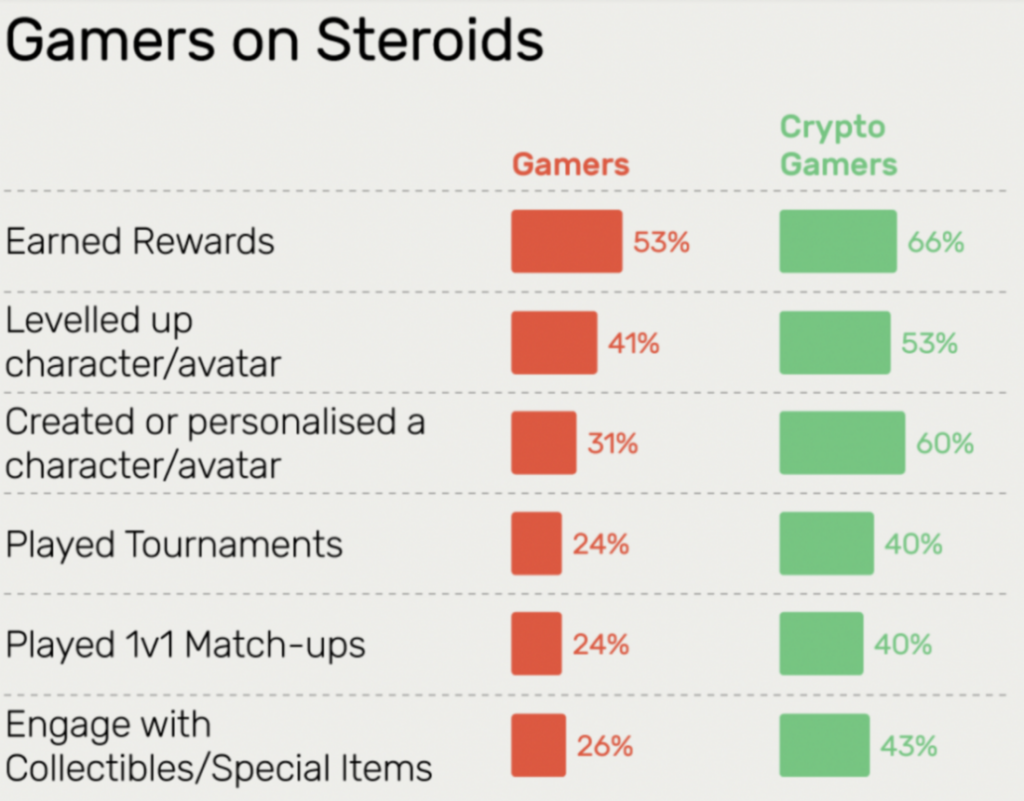
This data got me thinking: “what if onboarding a large number of gamers isn’t actually about developing a full-blown game or massive multi-chain, metaverse experience, but leveraging existing aspects of the competitive (esports) culture itself?”
Let’s take a quick look at a few ways esports has matured over the years.
A Brief History of Esports
If you look at the history of competitive gaming & esports, you’ll see the growth of the space also ties to technological progress.
We’ve come a long way from huddling together looking at a single screen in 1972. From shooting each other’s spaceships using primitive computing power, to massive arenas with tens of thousands watching in person, and millions at home. It’s been a paradigm shift in an incredibly short timeframe.
From the rise of arcade cabinets and the evolution of the game cartridge with Nintendo & SEGA, to the introduction of first-person shooters and computer (LAN) cafes. The early days of esports also allowed the development of personal brands, as people were being labeled “pro gamers” for the first time ever. This led to sponsorship deals driven by the increased visibility and awareness following parabolic interest from an ever growing pool of participants.
Imagine their faces in 1972 if we told them they’d move from this:
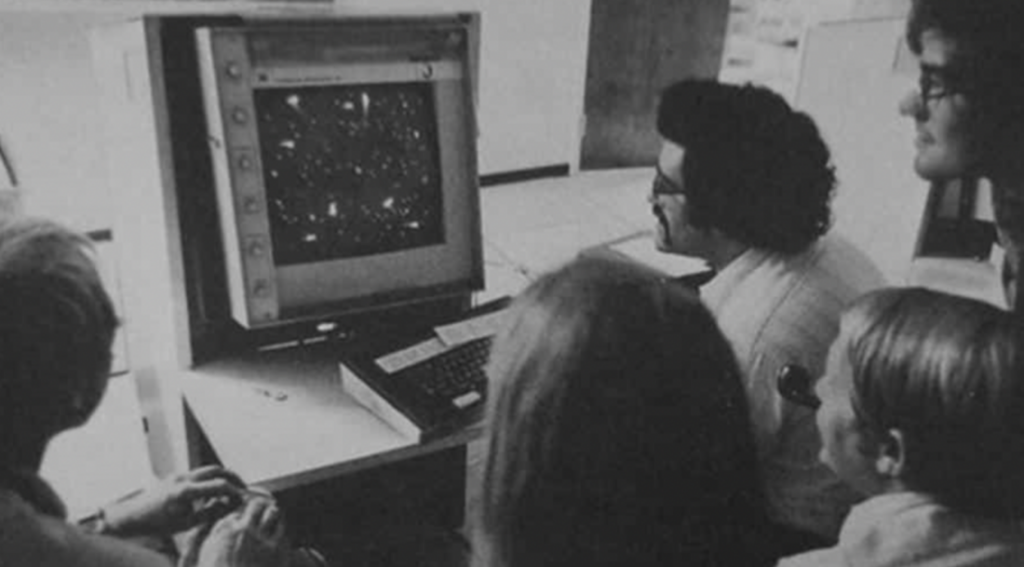
To this:
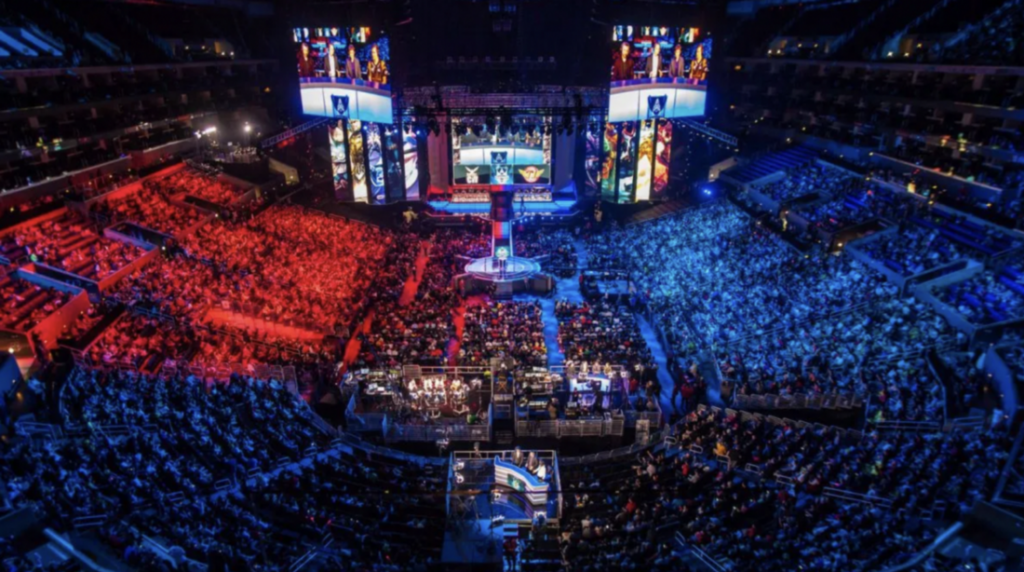
Today, there is increasing complexity for esports top-to-bottom. As players, organizations, and event planners alike are looking for streamlined solutions, gained efficiencies, and ways to further activate the rabid fanbase that’s before them in unique–& tech forward–ways.
According to Esports Insider, most (89%) eSports companies make revenue from sponsorship deals. That would be unheard of back in 1972, it’s just a pass time after all!
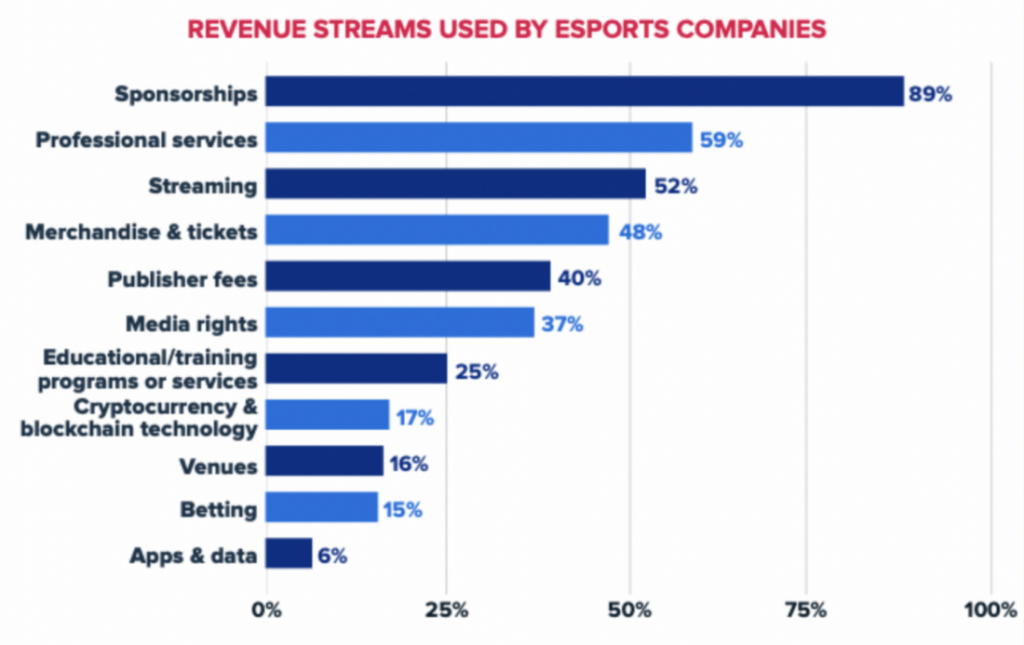
The Case For Esports x Blockchain Integrations
Companies are actively inspecting the blockchain landscape, with a reported 70% of surveyed esports companies having used or considered blockchain technology in their revenue strategies.

Only 13% of eSport companies are currently using NFT collectibles. More than double that number (27%) are considering integrating NFTs. Imagine the growth and network effects if the current NFT gaming ecosystem tripled. That’s just using those that are considering it, if we then factor in the ripple effects of those that are yet to ponder on its impacts, then this could go parabolic.
Using some of the use cases identified by Consensys, let’s look at a few specific examples of what this new wave of integration could look like.
1) Incentivization and Rewards for Fan Interactions
Create better cross-partner loyalty programs that motivate fans to perform certain actions or buy certain goods.
Example:
As a fan of a particular esports organization, I sign up for their loyalty program. I meet other fans through easy to use apps on my phone, can meet up with other fans in the venue, and even get discounts on partner merchandise they’re selling at the venue.
Beyond that, I’ve been told that the team shirt I recently purchased was a “hidden bounty”, earning me additional points in the loyalty shop. I’m one step closer to earning a one hour session with my favorite player.
> One active use case in this category is Team Vitality’s fan-app “V.Hive” which leverages the Tezos blockchain.

2) Verification of Memorabilia Authenticity to Reduce Fraud and Counterfeit Items
Example:
My team’s sweatshirt I bought at the recent event has a digital chip in it and I was told to scan the code when I get home.
It leads me to claim a digital item which verifies I’m the first person to ever own it. This even helps me if I sell this item, because I can now verify to others that the sweatshirt is legitimate, and customize my avatar in the fan app with the merch if I want. Organizations and events could even provide incentives or access to fans with verified authentic team merch for the teams participating in that event.
3) Design and Production of the Next Generation of Collectibles Using Digital Infrastructure
Example:
In the lead-up to a big event, an esports organization has worked with artists in their community, and their most passionate fans, to create digital collectibles for their community and build hype.
You find out this collectible also has dynamic metadata and updates based on your team’s progress throughout the tournament. If they go undefeated you get exclusive rewards, and even receive rare attributes for participation in applicable polls and posts during the event.
4) Creation of Markets for Gaming Collectibles (i.e skins)
The ability to trade digital goods, skins, and in-game items is a huge benefit for NFT technology. As is the optimization of those systems and interfaces.
Example:
I log into Counter-Strike and realize I earned a slick weapon skin (cosmetic).
Because of recent updates, I have the ability to resell the item (in my local currency) on a trusted secondary marketplace of cosmetic items. Additionally, I can port the cosmetic across many titles that have the same weapon, and now I’m using that cosmetic in Fortnite as well.
Instead of ecosystem coins (like Fortnite’s Vbucks or “Gil” in Final Fantasy) and encouraging users to buy/sell accounts with certain cosmetics, weapon upgrades, etc. the focus can now be on empowering the end user and incentivizing them for their playing your game (or supporting your org) across many titles and iterations.
If you aren’t sure this matters all that much, check out this list of the 12 most expensive CS:GO skins and see what people are selling rare cosmetics for–even without a clean & consistent marketplace to do so. For example, The Karambit Case Hardened Blue Gem recently sold for $1.4m USD. So if you think some of the current NFT sales are crazy, think again.

Also, in 2022 gamers have amassed almost $93 billion in micro transaction volume for digital assets. All these funds currently go to the intermediaries, i.e. the gaming companies. Just think if the players were able to extract this value for the time and effort they have sunk into the ecosystem.
Closing Remarks
TL;DR
- Despite a bumpy 2022, seeing a -92% reduction in $USD value for P2E-related NFTs, we saw over $3.4B in funding poured into blockchain gaming initiatives.
- When thinking of the future of blockchain games, we must prioritize fun and engaging social experiences. Fortnite did this and accrued $2.4b off cosmetic skins alone. In 2018. The blueprint is there.
- A couple of barriers stick out when it comes to current (non-crypto) gamer sentiment: Lack of familiarity with what these integrations could look like & hesitation in the process of setting up a crypto wallet being among them.
- Crypto-gamer sentiment & habits overlap quite well with the “hardcore gamer” & “esports fan” categories. They are twice as likely to create or personalize a character/avatar than a non-crypto gamer, and almost twice as likely to have played in tournaments or engage with collectibles. Inroads make sense here.
- With the rise of esports & esports organizations, many complexities are potentially answered with the use of blockchain technology; including:
- Incentivization and Rewards for Fan Interactions
- Verification of Memorabilia Authenticity to Reduce Fraud and Counterfeit Items
- Design and Production of the Next Generation of Collectibles Using Digital Infrastructure
- Creation of Markets for Gaming Collectibles (i.e skins)
The persistent development and growth of esports has led to countless innovations, and took us a direction very few could have anticipated. Similarly, blockchain integrations are challenging the current landscape. From how games are being developed and integrated to how the wider community is engaged and activated in the process, I see many overlaps between esports & blockchain in our future.
We are only just beginning to scratch the surface of what these integrations look like, so identifying real issues and solving/onboarding with those in mind will be crucial for us to begin showing those outside the crypto circles just how interesting this technology truly is.


